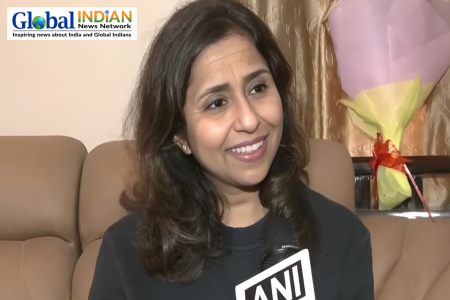
Nearly half of the more than 5 million Indians living in the United States have migrated since 2010. The Indian-American community is notably younger than the U.S. average, with a median age of 36 years. Additionally, Indians received around 320,000 work visas in 2022-23, accounting for an impressive 73% of the total work visas issued by the U.S.
These insights are drawn from the latest report by Indiaspora, a U.S.-based nonprofit organization, created in collaboration with the Boston Consulting Group. Titled “Small Community, Big Contributions, Boundless Horizons: The Indian Diaspora in the United States,” the report highlights the significant impact this small community—constituting just 1.5% of the U.S. population—has had on various aspects of American life, from the economic to the cultural.
Citing data from the Migration Policy Institute, the report notes that out of the 5.1 million Indian diaspora members in the U.S., approximately 2.8 million are first-generation immigrants. While around 30% of them arrived before 2000, nearly 45% made their move after 2010. This community is primarily concentrated in New York and California.
The report, which was released in Delhi by External Affairs Minister S. Jaishankar and U.S. Ambassador to India Eric Garcetti, points out that the median income for Indian-Americans is around $136,000—almost double the U.S. average.
“Indian-Americans make up only 1.5% of the U.S. population, yet they continue to have an outsized and positive impact across various aspects of American society,” said Indiaspora founder M. R. Rangaswami.
Interestingly, the report’s Steering Committee includes notable figures such as former PepsiCo CEO Indra Nooyi and former U.S. Ambassador to India Ken Juster.
While the United Arab Emirates hosts the largest segment of the Indian diaspora, the U.S. ranks second. The primary draw for Indians to the U.S. is its educational opportunities. The report indicates that 78% of Indian-Americans hold bachelor’s degrees or higher, far surpassing the U.S. national average of 36%.
According to Boston Consulting Group’s estimates, Indian-Americans contribute between 5% and 6% ($300 billion) in tax revenues annually. Additionally, their annual spending of $370-$460 billion significantly influences the economy through sales tax, business growth, and job creation.
Indian-origin leaders are at the helm of some of the world’s most influential companies, from Silicon Valley tech giants to global conglomerates. In 2023, Indian-origin CEOs led 16 Fortune 500 companies (3%), overseeing enterprises that generated about $978 billion (5%) in revenues and employed 2.5 million people (9%) worldwide.
Indian-origin founders head 72 of the 648 unicorn startups in the U.S., with their collective value exceeding $195 billion and employing approximately 55,000 people (13% of the unicorn workforce). The report cites a 2020 study by the National Bureau of Economic Research and Harvard University, revealing that the Indian diaspora’s contribution to U.S. patents increased from 1.9% in 1975 to 10% in 2019.
Many members of the Indian diaspora come to the U.S. for educational opportunities. Open Doors data for 2022-2023 reveals that around 270,000 Indian students are pursuing graduate and undergraduate degrees in U.S. universities, making up 25% of the international student population in the country. The majority of these students—over 70%—are enrolled in STEM (Science, Technology, Engineering, and Mathematics) programs, with 10% in business or management courses, and around 60% at the graduate level.
In the healthcare sector, Indian-origin physicians represent 10% of all doctors in the U.S., serving 30% of the patients.
Data from the Asian American Hotel Owners Association shows that Indian-Americans own about 60% of all hotels in the U.S., generating $700 billion in revenue and creating over 4 million jobs, both directly and indirectly. Additionally, Indian-Americans own an estimated 35%-50% of all convenience stores in the country.
However, not all statistics are positive. The Pew Research Center estimates that around 6% of the Indian-American community lives below the poverty line, with undocumented migration being a significant factor. In 2021, around 14% of Indian-Americans were undocumented, positioning them as the third-largest group of undocumented migrants in the U.S.













